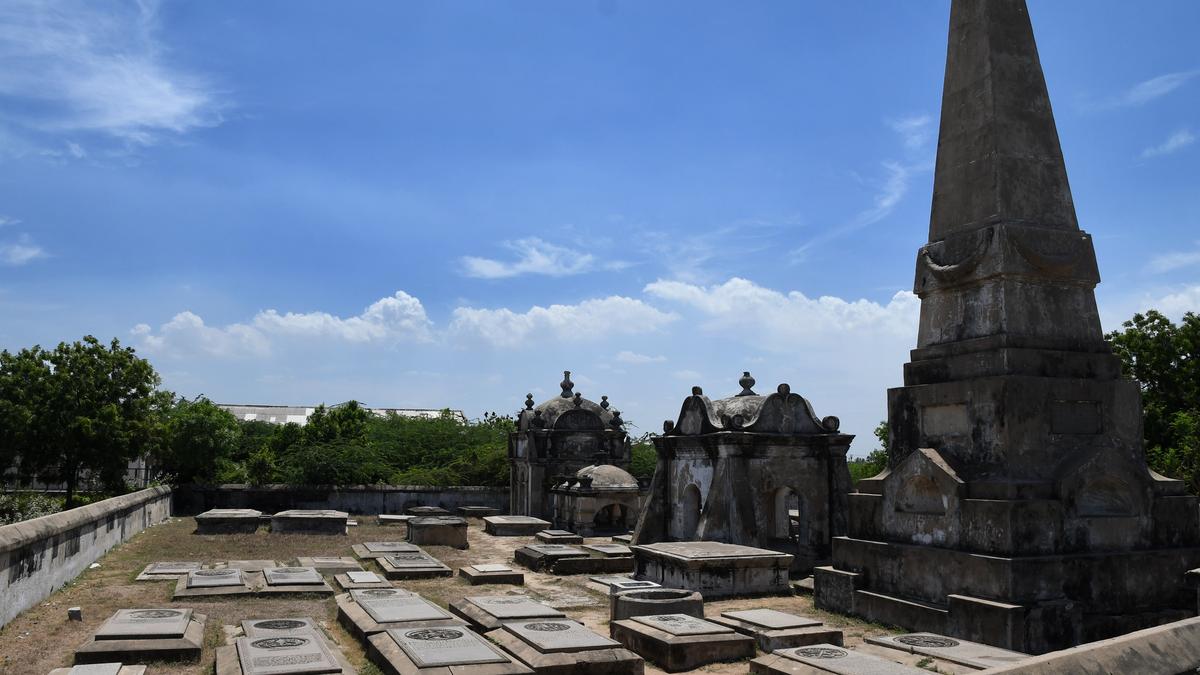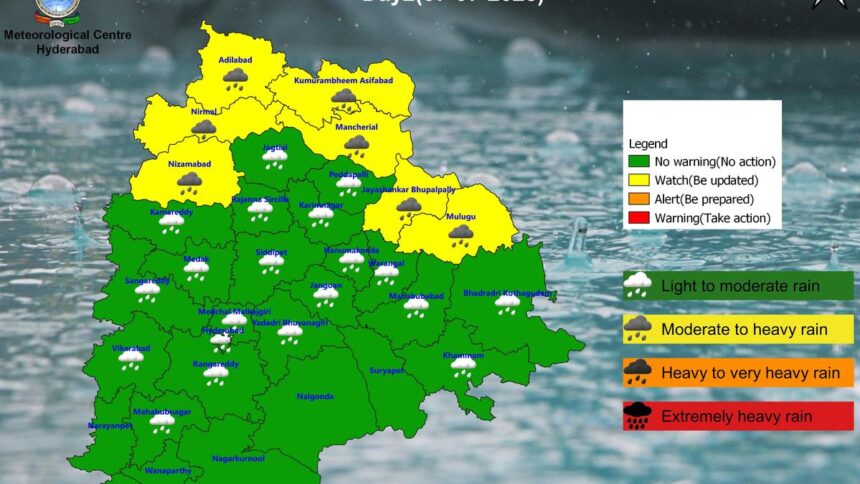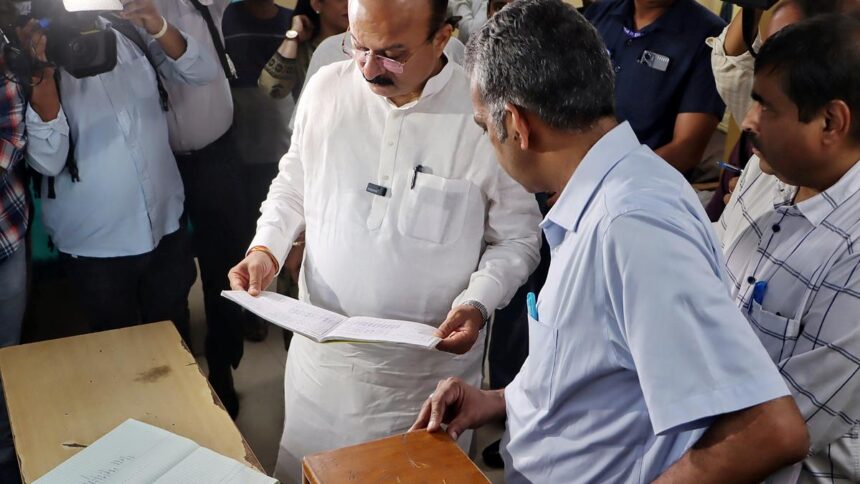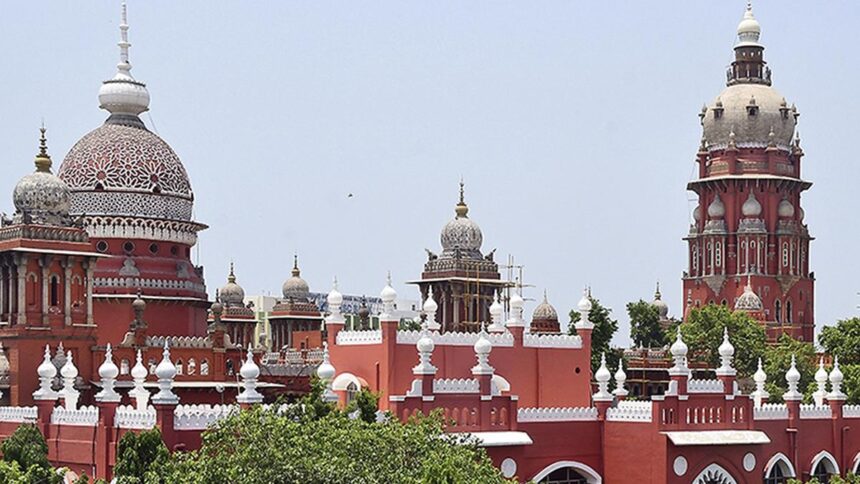
The Dutch Cemetery at Pulicat in Tiruvallur district.
| Photo Credit: JOTHI RAMALINGAM B
The origin of Madras can be traced to Pulicat.
“Pulicat is where trade began, eventually resulting in the founding of Madrasapattinam nearby by the British,” says Xavier Benedict, the founder-trustee of Art & Architecture Research Development & Education (AARDE) Foundation. As part of Madras Day celebrations, the not-for-profit trust is organising a heritage walk in the historic port town to trace the origin of Madras.
“This year, the walk will focus on understanding history through Nature,” explains Xavier, adding that when we speak about the history of Madras, the first question that comes to the mind is: “Why did the Portuguese, Dutch, and Britishers land in what we call Chennai today?” The answer, he says, lies in the monsoon and the winds.
“Trade was built around Nature,” he explains. “Ships arrived at India during the southwest monsoon, exiting during the northeast monsoon months of October until March and April.” This pattern was driven by the winds, crucial for ships to navigate long distances. Since ships were then made of wood as opposed to stainless steel today, they needed sand dunes to be anchored to the shore. “These were present in plenty in lagoons and the delta regions,” he explains. This is why most lagoons, including Pulicat, have forts.
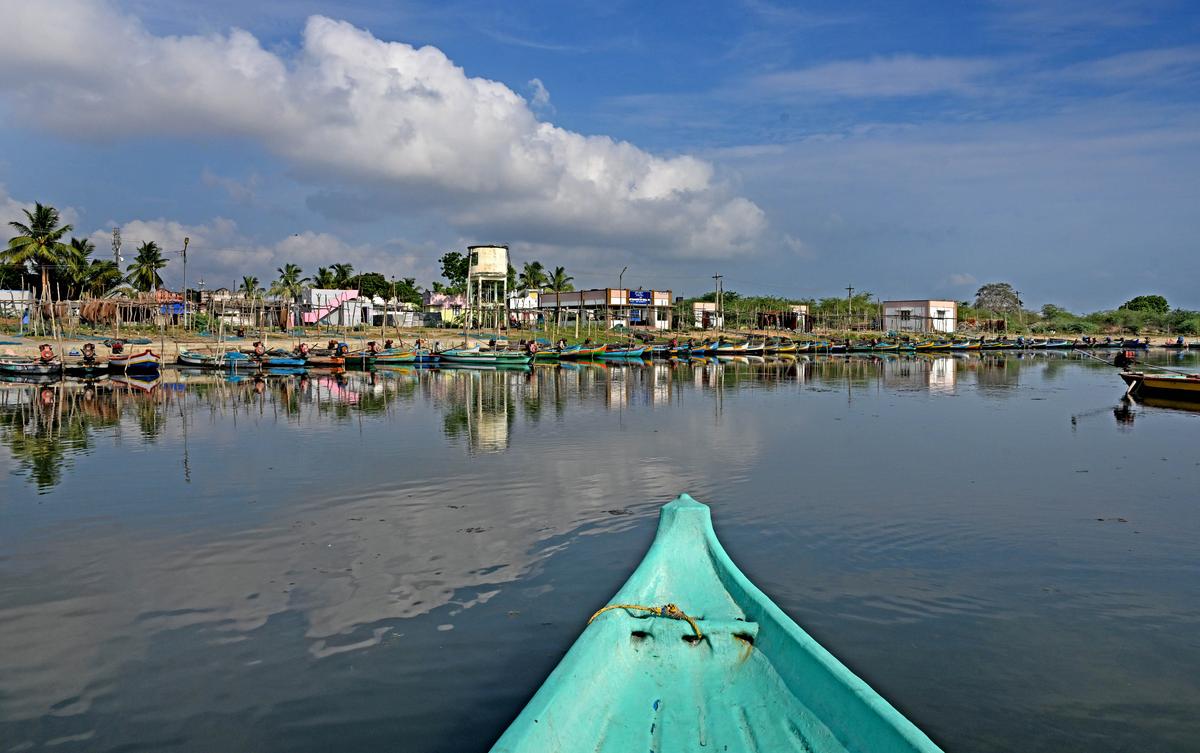
A view of the Annamalaicheri fishing hamlet near Pulicat Lake
| Photo Credit:
JOTHI RAMALINGAM B
European traders came to Tamil Nadu for a reason: they needed fuel to power their navigation. “Fuel, in their time, was the sail cloth or paaimaram in Tamil,” points out Xavier. Ships needed sturdy cloths to travel the seas and Xavier adds that Europeans used linen and hemp for their sails, which couldn’t withstand the force of the winds for more than a month.
They hence set out in search of a better variety: cotton. This quest led them to Tamil Nadu, whose black soil, kari manal, that will eventually earn the coast the name ‘Coromandel’, was conducive for cotton. “Coromandel cotton was thick, and was apt for making sail cloth,” says Xavier. This variety was grown across the coast from Tuticorin, all the way up to Kakinada in Andhra Pradesh. “It has been historically proven that cotton sails were exported from India,” he adds.
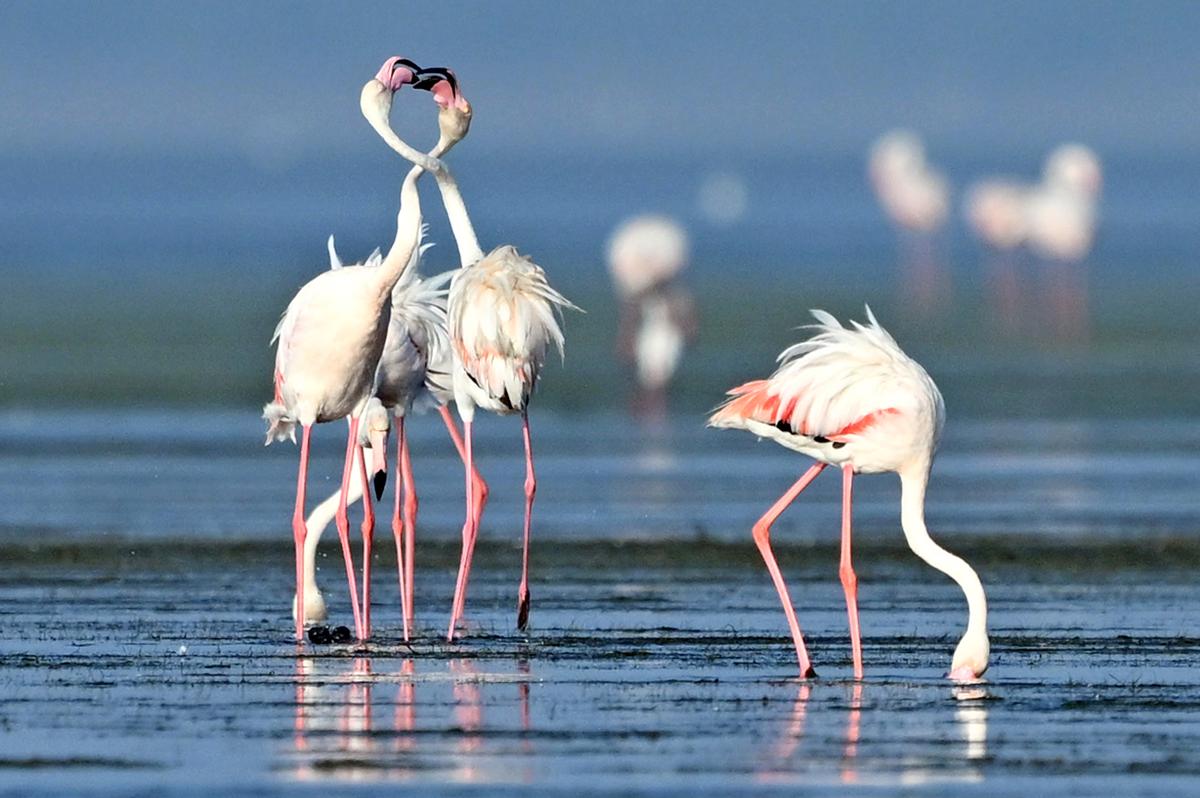
An array of migratory birds providing a picturesque sight at Pulicat lake near Chennai
| Photo Credit:
JOTHI RAMALINGAM B
In exchange, Europeans brought spices from the Indonesian islands to trade. “They offered cardamom, cloves, and cinnamon in exchange for Tamil Nadu’s cotton,” says Xavier: “Every document in our archival material points out that 80% of commodity on ships until the 1850s was cotton,” he adds.
Xavier hopes that to create awareness on Pulicat’s importance in India’s trade and historical landscape. “We are fighting for World Heritage status for the port town that also houses the oldest Dutch cemetery in India,” he says.
The heritage walk will take participants to the Pulicat Interpretation Centre, Dutch and Portuguese cemeteries, Adi Narayana Perumal temple, Tamil mosques, the Lighthouse, Portuguese church, and the lagoon.
The trip will start from Chennai at 7am from Loyola’s ICAM Gate, Mahalingapuram on August 23. For details, visit www.aarde.in.; to register WhatsApp 9043542174 / 9884013409.
Published – August 23, 2025 02:48 pm IST







